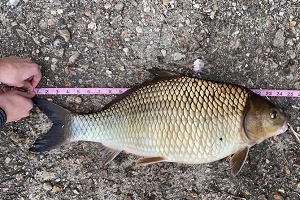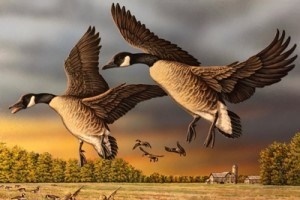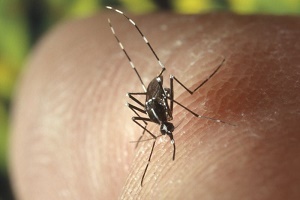|
Some of the items in this week's news digest reflect the impact of COVID-19 and how the Michigan Department of Natural Resources is adapting to meet customers' needs. Public health and safety are our biggest priorities, and we will continue to share news and information about the safest, and sometimes new, ways to enjoy our state's natural and cultural resources.
Follow our COVID-19 response page for FAQs and updates on facilities and reopening dates. For the latest public health guidelines and news, visit Michigan.gov/Coronavirus and CDC.gov/Coronavirus.
Here's a look at some of this week's stories from the Department of Natural Resources:
See other news releases, Showcasing the DNR stories, photos and other resources at Michigan.gov/DNRPressRoom.
PHOTO FOLDER: Larger, higher-res versions of the images used below, and additional ones, are available in this folder. The photo of the Asian tiger mosquito is courtesy of James Gathany via the Centers for Disease Control and Prevention's public health image library.

During the first few months of the coronavirus emergency in Michigan, a lot of people turned to the outdoors for exercise, fresh air and a little peace of mind. For two residents, that included time on the water that led to new state-record fish!
Owen Seay of Big Rapids, Michigan, was baitcasting in the Muskegon River in Mecosta County on April 28 when he caught a quillback carpsucker weighing in at 9 pounds, 15 ounces and measuring 24.75 inches. That catch (pictured above) bested the previous state record, an 8.52-pound catch on Hardy Dam Pond in Newaygo County in 2015.
Scott Heintzelman, the DNR's Central Lake Michigan Management Unit manager out of Cadillac, verified that new record.
On May 25, Garrett Rice of Athens, Michigan, caught a 33-pound bigmouth buffalo measuring more than 3 feet long while bowfishing on Lake Erie in Monroe County. Jay Wesley, Lake Michigan Basin coordinator with the DNR Fisheries Division, verified Rice’s fish, which replaced the 32-pound record-holder caught last year on the Shiawassee River in Saginaw County.
Verification of state records usually happens quickly after a catch but has been delayed due to COVID-19 public health and safety restrictions. These two records were recorded remotely on certified scales, then frozen, and later verified in person.
State-record fish are recognized by weight only. To qualify, a fish must exceed the current listed state-record weight, and identification must be verified by a DNR fisheries biologist. See the current roster of record setters at Michigan.gov/StateRecordFish.
Questions? Contact Lynne Thoma at 517-284-5838.
|

A century ago, elegant, vase-shaped American elms shaded neighborhoods with their lacy, arched canopies. Today, many of those trees are dead, skeletal husks – a legacy of the destructive Dutch elm disease. The fungal disease, spread by bark beetles, slowly wiped out most American elms after being introduced in the early 1900s.
The American elm’s story isn’t over, however. Midwest forest health experts are working to stage a comeback, and they need your help.
Have you noticed any large, healthy American elms in your area or when out hiking in the forest? Those “survivor elms” might be tolerant of Dutch elm disease. If you are in Michigan’s colder climate zones (zone 5 and colder), you especially are encouraged to report these trees. Currently, there are no Upper Peninsula reports and very few northern lower Michigan reports. It’s important that these zones are represented, because it helps provide a clearer picture of where disease-resistant elms may be.
Several Midwest state natural resource agencies and the U.S. Forest Service are working together to identify such locations. They plan to collect branch samples for propagation (the process of growing new trees from a variety of sources) with the goal of developing a seed orchard suitable for future reforestation efforts in northern areas.
If you come across one of these trees, record its location and diameter at 4.5 feet from the ground. Submit the observation to the survivor elm website.
Eligible elms must be:
- An American elm (not an imported species).
- At least 24 inches in diameter.
- Disease-free.
- Naturally grown, not planted or treated with fungicide
- Within 1 mile of Dutch elm disease (indicated by nearby dying/dead elms).
|

The 2020 Michigan duck stamp is here! This year’s design features a flock of Canada geese coming into a decoy spread. The stamp is a voluntary purchase and does not replace the state waterfowl hunting license, and proceeds from stamp sales help restore and enhance wetlands and waterfowl habitat.
In addition to the stamp, a limited edition signed and numbered print of the design is also available for purchase. The design was illustrated by Chris Smith, a wildlife artist, freelance author and hunter from Suttons Bay, Michigan, who specializes in dogs and wildlife scenes. Smith’s art also was featured for the 2005, 2014, 2016 and 2018 duck stamps.
The Michigan Duck Hunters Association, a nonprofit organization dedicated to waterfowl and wetland conservation, coordinates the Michigan waterfowl stamp program in partnership with the DNR. The funds raised through stamp sales will be used to fund MDHA projects, with 10% used to match DNR funding for purchasing wetlands.
For more information on the program, and how to get a stamp of your own, visit the Michigan Waterfowl Stamp Program page.
|

The Asian tiger mosquito, an invasive species, was first found in Livonia, Michigan, in 2017, and then in Romulus in 2018 and, now, in Taylor in 2020 – and all sightings were in industrial areas rather than wide open spaces.
The mosquitoes are usually found in tropical and temperate areas, but as the climate warms, the species has spread into more northern regions. These day-biting mosquitoes breed in standing water and can transmit viruses to people.
While Michigan has not had any illnesses associated with this particular mosquito, it's important to take precautions anytime you're outdoors:
- Wear an EPA-registered insect repellent.
- Get rid of sources of standing water such as wading pools, old tires, gutters, flowerpots and buckets. This prevents mosquito eggs from hatching or larvae from developing into adults.
- Wear long-sleeved shirts, long pants and socks.
- Make sure doors and windows have tight-fitting screens.
For more information about mosquito-borne viruses and mosquito surveillance in Michigan, visit Michigan.gov/EmergingDiseases.
|
|